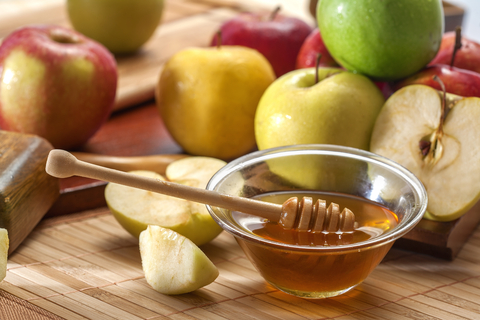It’s now official; childhood obesity is now out of control! Did you know, 1 out of every 5 American children are now considered overweight (in some regions, this rises to 1 in 3 children!) This alarming statistic has doubled in the past 20-30 years. Frightening isn’t it? Many people think that obesity is an adult problem, but unfortunately, it affects children of all ages, races, and gender groups too! Let’s think about this issue a little more.

Besides the obvious self-esteem issues that come from peer rejection, bullying, and teasing, overweight children are at a greater risk of developing type 2 diabetes, high blood pressure, and high cholesterol. These diseases were once found only in adults, but are now rampant amongst the number of children suffering from childhood obesity.
Recent studies indicate that this generation of children may be the first to have shorter life expectancies than their parents! According to a June 2012 article in USA Today, some overweight children consume 1,000-2,000 calories a day in the form of sodas, sweet drinks, and desserts. None of these items make us feel as full as the same amount of solid food.
Common causes of childhood obesity..
There are ranges of factors, which science and medicine has identified as having a primary role to play in the growing number of children who are suffering with childhood obesity. Some of these are genetic, but most of them are caused by a poor understanding of how our diets and lifestyle can negatively impact on our health. Some common causes for childhood obesity include:
- Family genetics - less commonly to blame but can be a cause.
- Poor role models in the home - through poor understanding and example setting.
- Fast food and convenience foods - unfortunately this is a huge problem in the US.
- A lack of physical activity - as entertainment technology improves, activity suffers.
- Too much sedentary TV and video games - couch surfing is one of the biggest causes.
So what can we do to improve our kids’ health?
Although childhood obesity is a huge issue that we all need to take very seriously, there’s a huge range of things we can do to help combat the disease and keep our children healthy and active. Never underestimate how the healthy foundations in childhood benefit them in later life! Firstly however, finding out your child’s BMI is a great place to start to understand the problem. The CDC has published more info on childhood BMI that is very useful for parents.
The National Institutes of Health and the American Academy of Pediatrics recommend that children between the ages of 9-11 be screened for high cholesterol levels! Previously recommended only for children with a family history of heart disease and high cholesterol, the test is now recommended initially for children between the ages of 9-11 and again between the ages of 17-21.
The most recent statistics state that 17% of all children and adolescents in the US are obese, prompting this newest recommendation.
-
Make this a family project! Don’t single out the child and draw attention to their weight. Don’t deal with “diets.” They tend to encourage the yo-yo effect of gaining and losing. Instead, to combat childhood obesity, teach and practice good nutrition! That’s how lasting weight loss will be achieved!
-
Learn to eat healthy as a family. This means becoming familiar with the food pyramid, the major food groups, and the recommended portions. Make a game out of teaching and reviewing this information in your home.
-
Give each family member a food item and discuss how to read and understand the nutrition fact label.
-
Use easy diet labels, either purchased or homemade, to help your family make wise food choices on their own. Simply affix the labels to the products in your refrigerator and cupboards and help your children remove the guess work.
-
Have each family member keep a food log or weight loss journal. Use these to spark family discussions about wise food choices. Present a weekly reward to the family member that makes the best decisions! Competition can be healthy!
-
Learn to recognize proper portion sizes. Discuss ways to compare recommended portions to common items. For example, a proper serving of peanut butter is the approximate size of a golf ball. Be aware of portion sizes in the home and even more importantly, when eating out.
-
Save money and calories by sitting down weekly with the grocery ads and planning healthy meals for the week. Encourage your children to help you shop to spark their interest. They can use the nutrition fact labels to compare and select the healthiest product in the store. Sure it will take more time, and yes, I realize everyone is busy, but the rewards will be worth the extra time.

-
Try to eat foods that are as close to “natural” as possible. Convenience foods, prepackaged foods, and ready-made foods tend to be packed with preservatives, sodium, and calories. Also limit sugar or artificially sweetened drinks as well as saturated fats!
-
Take a family walk after dinner each night. It will help your family bond and it will help in the digestion process. Have each family member keep an exercise log sheet and do a weekly comparison.
-
Encourage activity by making “exercise” and “play” synonymous! Go swimming, biking, hiking, skating, etc. as a family. Rake leaves, wash the car, take the dog for a walk - any kind of movement is better than sitting in front of the television! Children over the age of 2 should have a minimum of 60 minutes of moderate to vigorous activity a day!
-
Remind your family often of the many health benefits that come from being active. Make a big deal when their numbers go down (weight, blood pressure, cholesterol, blood sugar, etc.) Don’t forget to limit television, video games, and computer time. Did you know that kids with TVs in their rooms are more likely to be overweight?
And finally, be a good role model for your children in this fight against childhood obesity. Take care of your own health, because our children learn everything they know (including habits) from watching their parents. It’s far more effective to set a good example than to ‘tell’ your kids what it is they should or shouldn’t be doing!



